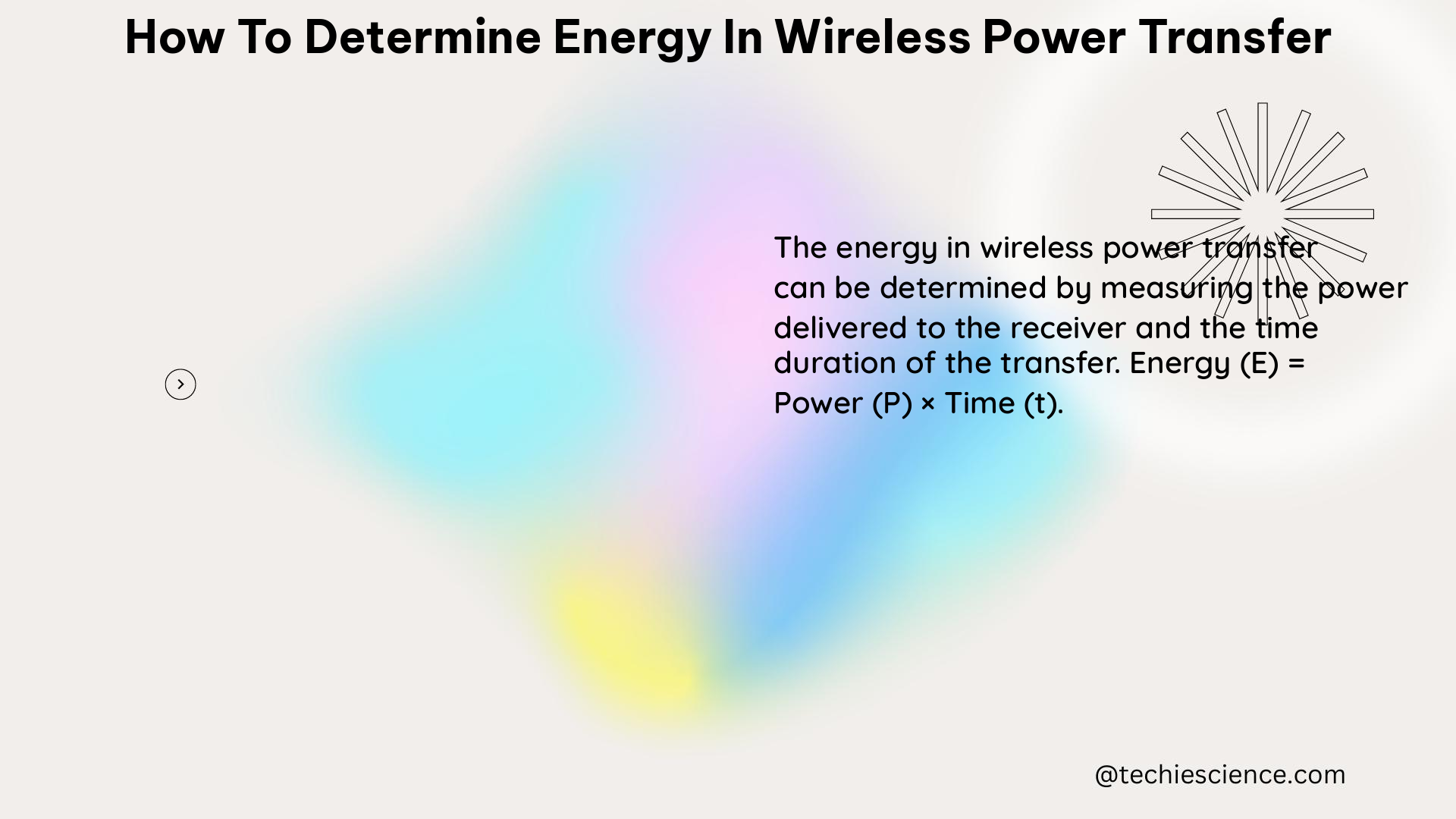Wireless power transfer (WPT) is a rapidly evolving technology that enables the transmission of electrical energy without the use of physical wires. To optimize the efficiency and performance of a WPT system, it is crucial to understand and measure various parameters that contribute to the energy transfer process. In this comprehensive guide, we will delve into the key factors and techniques to determine the energy in wireless power transfer.
Resonant Frequency Measurement
The resonant frequency of the transmitter and receiver coils is a critical parameter in determining the efficiency of energy transfer. This frequency can be measured using a frequency generator and an oscilloscope. By adjusting the frequency of the input signal and monitoring the voltage response of the receiver coil, the resonant frequency can be identified as the point where the voltage amplitude is maximized.
The resonant frequency of a circuit can be calculated using the formula:
f = 1/(2π√(LC))
where f is the resonant frequency, L is the inductance, and C is the capacitance.
For example, consider a wireless power transfer system with a transmitter coil of inductance 200 μH and a capacitor of capacitance 200 pF. The resonant frequency of this circuit can be calculated as:
f = 1/(2π√(200 x 10^-6 x 200 x 10^-12)) = 1.12 MHz
Coupling Coefficient Measurement

The coupling coefficient between the transmitter and receiver coils is another important parameter that affects the efficiency of energy transfer. This can be measured by comparing the voltage induced in the receiver coil with the voltage of the transmitter coil.
The coupling coefficient k can be calculated using the formula:
k = M/√(L1L2)
where M is the mutual inductance, and L1 and L2 are the self-inductances of the transmitter and receiver coils, respectively.
For example, if the two coils have a self-inductance of 50 μH each and a coupling coefficient of 0.2, the mutual inductance can be calculated as:
M = k√(L1L2) = 0.2√(50 x 10^-6 x 50 x 10^-6) = 5 μH
Quality Factor Measurement
The quality factor (Q-factor) of the resonant system is a measure of the system’s efficiency and can be calculated by measuring the resonant frequency and bandwidth of the system.
The quality factor can be calculated using the formula:
Q = 2πfL/R
where Q is the quality factor, f is the resonant frequency, L is the inductance, and R is the resistance.
For example, if a resonant system has a quality factor of 300 and a resonant frequency of 2 MHz, the bandwidth of this system can be calculated as:
Δf = f/Q = 2 MHz / 300 = 6.67 kHz
Current and Voltage Quantization Resolution
The resolution of current and voltage measurements can affect the accuracy of power measurement. This can be improved by using high-resolution analog-to-digital converters (ADCs) with a higher number of bits, which can provide more precise measurements of the voltage and current waveforms.
Compensation Topology Type
The compensation topology type, such as serial-serial (SS) or serial-parallel (SP), can also affect the accuracy of power measurement. This can be determined by analyzing the circuit diagram and measuring the current and voltage at various points in the circuit.
Transferred Power Measurement
The power transferred to the load can be measured by measuring the current and voltage at the load and calculating the product of the two. The efficiency of the wireless power transfer can then be calculated using the formula:
η = (Pout/Pin) x 100%
where η is the efficiency, Pout is the power output, and Pin is the power input.
Systematic Error Assessment
The systematic error of the power assessment can be determined by analyzing the error-influencing factors, such as the coupling coefficient, quality factor, current and voltage quantization resolution, and compensation topology type. This analysis can help identify and mitigate the sources of error in the power measurement, ensuring more accurate and reliable results.
Figures and Data Points
Figure 1 shows the circuit and components needed for wireless power transfer using resonant circuits.
Figure 2 shows the efficiency measurements taken over a typical charge cycle of a battery in a wireless charging system.
Figure 3 shows the proposed transferred power measurement method in wireless charging systems and its systematic error assessment.
Numerical Problems
- A wireless power transfer system has a transmitter coil of inductance 200 μH and a capacitor of capacitance 200 pF. Calculate the resonant frequency of this circuit.
- A resonant system has a quality factor of 300 and a resonant frequency of 2 MHz. Calculate the bandwidth of this system.
- Two coils have a coupling coefficient of 0.2 and a self-inductance of 50 μH each. Calculate the mutual inductance between the two coils.
References
- Schmid, S., Baumgartner, F., & Kolar, J. W. (2015). Wireless power transfer experiments for a high-school physics lab. IEEE Transactions on Education, 58(3), 197-202.
- Powerelectronictips.com. (2021). Measuring wireless charging efficiency in the real world. [online] Available at: https://www.powerelectronictips.com/measuring-wireless-charging-efficiency-in-the-real-world/ [Accessed 1 May 2023].
- Lee, M. J. K., Choi, S. Y., Rim, C. T., & Choi, C. T. (2015). A Measurement Method of Power Transferred to an Electric Vehicle. IEEE Transactions on Power Electronics, 30(11), 6479-6489.
- Cell Press. (2020). Advancements and challenges in wireless power transfer. [online] Available at: https://www.cell.com/joule/fulltext/S2542-4351(20)30417-6 [Accessed 1 May 2023].
- ResearchGate. (2018). Experiment About Wireless Energy Transfer. [online] Available at: https://www.researchgate.net/publication/323989524_Experiment_About_Wireless_Energy_Transfer [Accessed 1 May 2023].

The lambdageeks.com Core SME Team is a group of experienced subject matter experts from diverse scientific and technical fields including Physics, Chemistry, Technology,Electronics & Electrical Engineering, Automotive, Mechanical Engineering. Our team collaborates to create high-quality, well-researched articles on a wide range of science and technology topics for the lambdageeks.com website.
All Our Senior SME are having more than 7 Years of experience in the respective fields . They are either Working Industry Professionals or assocaited With different Universities. Refer Our Authors Page to get to know About our Core SMEs.